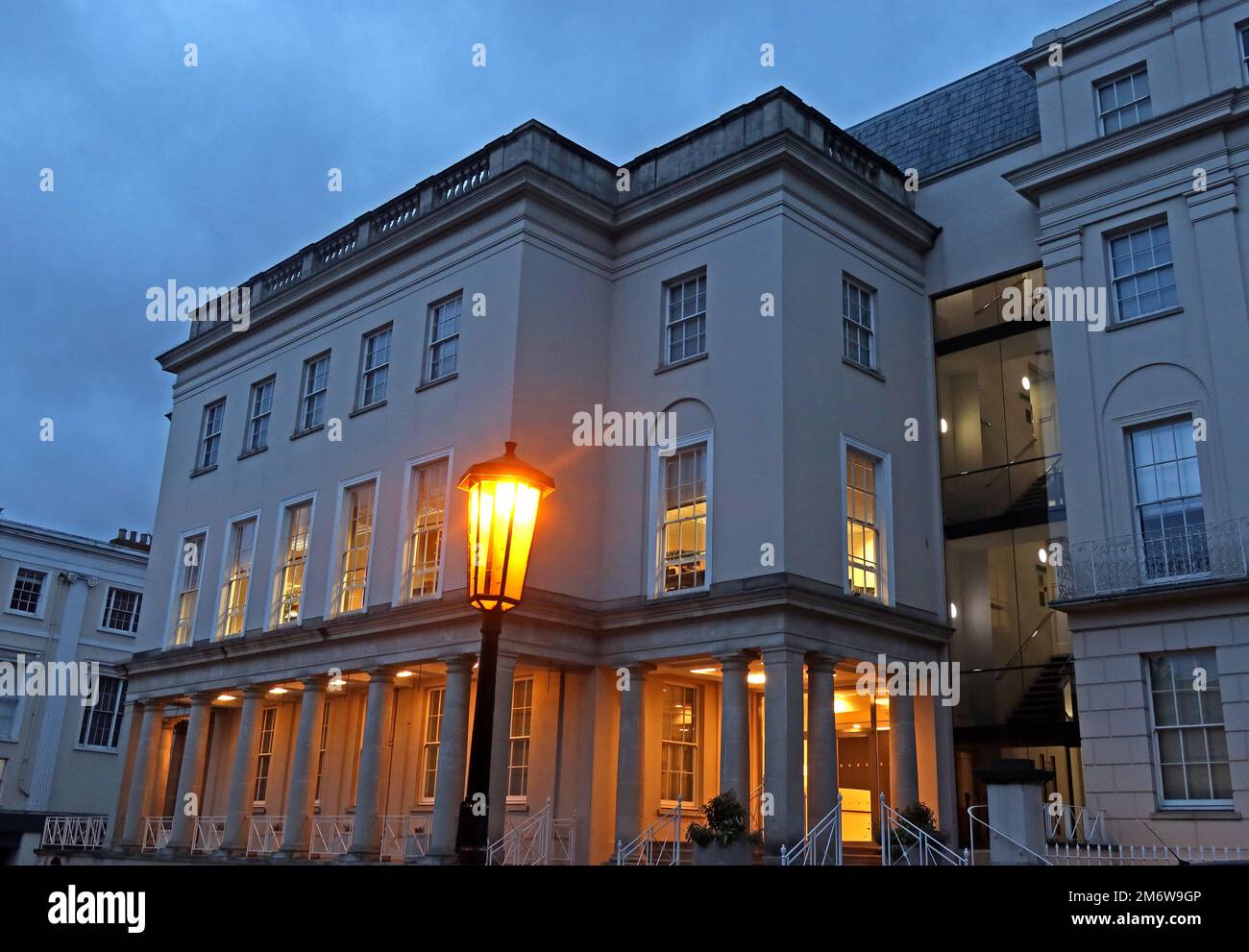Promenade Regency Spa architecture at dusk, Cheltenham town, Gloucestershire, England, UK, GL50 1NW

Image details
Contributor:
Tony Smith / Alamy Stock PhotoImage ID:
2M6W9GPFile size:
45.9 MB (1.6 MB Compressed download)Releases:
Model - no | Property - noDo I need a release?Dimensions:
4812 x 3336 px | 40.7 x 28.2 cm | 16 x 11.1 inches | 300dpiDate taken:
4 October 2022Location:
Cheltenham town, Gloucestershire, England, UK, GL50 1NWMore information:
Cheltenham owes much to its Regency roots, which were pivotal in assuring its growth from a Medieval Manor village, to the Town it is today. A visit by King George III secured Cheltenham's reputation as a fashionable place to be seen, and this popularity contributed to its rapid growth during the Regency Period. This short and extensive expansion period has given our Town an abundance of Regency buildings, and has earned us our place as Britain’s most complete Regency Town. As a style, Regency Architecture started popping up in the late 1700's, pioneered by Scottish Architect Robert Adam, and continued even after King George IV’s untimely death, well into the 1840's. It is strictly attributed to late Georgian architecture and is typified by a renaissance of neoclassicism, which drew inspiration from the Ancient Greeks and Romans, featuring Ionic Porticos and fluted columns galore. Anyone taking a casual stroll around Cheltenham will easily spot these ancient influences, which adorn many buildings in the Town. Regency Style was also used to describe the decorative arts of the interior design including block printed, or striped wallpaper, as well as the fashion of the time including the famous Empire silhouette. Pop along to the Holst Birthplace Museum to see a perfectly preserved interior from the period. Much of Cheltenham's iconic architecture was built during the Regency and subsequent Reign of King George IV between 1811 and 1830. Unlike many other periods of architecture, Regency was not about strict building rules, and was instead more a set of 'guidelines' for the design of the buildings. For example, many modern Cheltenham homes reside in plain, elegant Regency buildings, particularly around Tivoli, The Suffolks and Bath Road. These Regency gems often appear flat roofed (but look closely they aren’t) and have a flat vertical façade, string course (a horizontal line in relief between floors) and are finished in stucco with multi-paned sash windows.